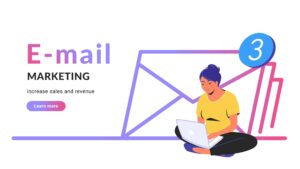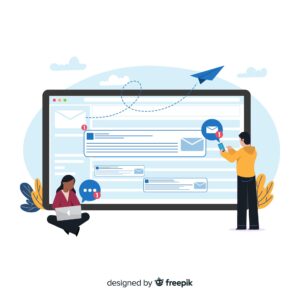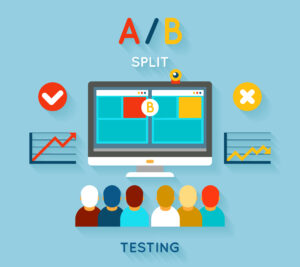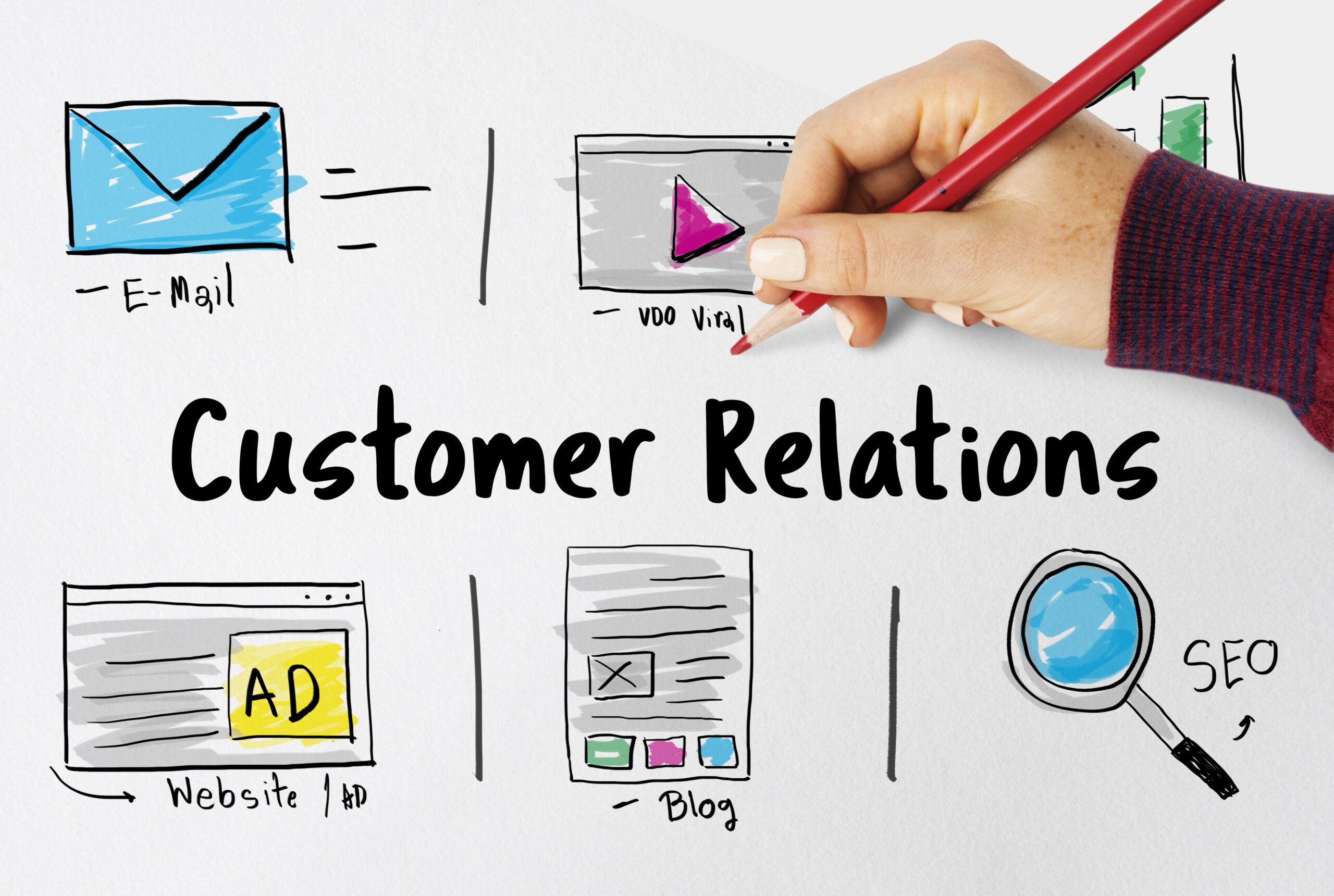Conversion-focused email marketing strategies
Conversion-focused email marketing strategies can be the game-changer your business needs.
In a digital world where competition is fierce, standing out is no small feat. But that’s exactly what these strategies allow you to do.
Email marketing has always been powerful, but with conversion-focused tactics? It becomes a formidable tool in your arsenal.
Think about it: personalization, optimized design, compelling content… all components of Conversion-focused email marketing strategies. They are not just buzzwords; they’re proven methods for increasing engagement and driving conversions.
Table Of Contents:
- Unlock Higher Conversion Rates with Conversion-Focused Email Marketing Strategies
- How Can Email Design Boost Your Conversions?
- Mastering the Art of Compelling Subject Lines and Email Content
- Unlocking the Power of A/B Testing for Higher Conversions
- Leveraging Social Proof and Emotional Triggers in Email Marketing
- Mastering Mobile Optimization and Accessibility in Email Marketing
- Maximizing Conversions: Creative Strategies Unleashed
- Mastering the Art of Email Campaign Performance
- Conclusion
- FAQs in Relation to Conversion-Focused Email Marketing Strategies

Unlock Higher Conversion Rates with Conversion-Focused Email Marketing Strategies
In the world of digital marketing, conversion-focused email marketing strategies are more than just buzzwords. They are essential tools that can significantly increase your conversion rates.
With over 50% of emails now being opened on mobile devices, it is crucial to prioritize mobile optimization in these strategies. Ensuring that your subscribers can interact with the content no matter what device they are using is paramount.
The Power of Personalized Emails in Marketing
One key component of these strategies is personalization – tailoring messages based on individual behavior and preferences. The impact of this approach cannot be overstated; personalized calls-to-action (CTAs) alone have been shown to increase conversions by over 200%. That’s right – a staggering tripling effect. It makes perfect sense though: customized communication directly leads to increased email conversion rates.
To effectively implement this strategy, you need to segment your audience based on factors such as demographics or past purchasing behaviors. Then, craft unique messages targeted at each group’s interests and needs using different types of emails for different goals.
Quality Over Quantity
No one appreciates spammy mailboxes filled with irrelevant information. Instead, focus on sending fewer but more meaningful communications that are designed with purposeful intent – whether it’s providing value through informative content or enticing readers with exclusive deals and discounts.
Bombarding subscribers with numerous generic emails every day may lead them to unsubscribe from your list or mark your emails as spam – definitely not what we want when aiming for higher conversions.
Create Compelling Calls-to-Action (CTAs)
Your call-to-action plays a crucial role in guiding subscriber actions and improving overall campaign effectiveness. To enhance conversions, make sure to include well-crafted CTAs in every email you send out. These CTAs guide readers on the next steps to take after reading your message, thus helping them smoothly progress along the customer journey.
Make sure your CTA is powerful and clear, sparking a sense of urgency that gets folks to act right away.
Key Takeaway:
Get smart with your email marketing. To skyrocket conversions, prioritize mobile optimization and personalize content based on audience behavior. Remember – quality trumps quantity; so send fewer, purposeful emails instead of flooding inboxes. Finally, don’t forget to include compelling CTAs that prompt immediate action.

How Can Email Design Boost Your Conversions?
Email marketing is not just about crafting compelling content. Presenting content in an attractive and intuitive manner is essential for successful email marketing.
Think of your email design as the digital storefront for your brand – it needs to invite people in, guide them effortlessly around, and make their experience so enjoyable they want to return again. That’s where responsive email design comes into play.
The Role of Responsive Design
In today’s mobile-first world, nearly 63% of all emails are opened on mobile devices. This statistic alone underscores the importance of having an email design that adapts seamlessly across different screen sizes.
A responsive promotional email ensures readability and ease-of-use regardless of whether your recipient opens it on a desktop computer or smartphone. The end result? A positive user experience leading to higher conversions.
Captivating with Visuals
No matter how well-written your message might be, if it doesn’t catch the eye, chances are high it won’t get read. Enter visuals: proven tools for enhancing engagement within emails.
According to data, using visuals in emails can increase engagement by up to 650%, compared with text-only messages. But remember: effective use isn’t simply adding random images or graphics; instead think relevant visual elements that add value while promoting interaction.
Maintaining Consistency Across Platforms
Your brand identity should remain consistent across every platform including within individual promotional emails whether viewed on a desktop computer, smartphone, or tablet. Consistency breeds familiarity and reliability, key factors influencing customer loyalty, repeat business, and long-term success.
Therefore, maintain the same color schemes, typography, logo placements, etc., regardless of the device used to access messages, providing a seamless experience for users irrespective of their chosen mode of communication.
Tailoring Content Based On Audience Preferences
Remember, folks react differently to various content and styles. So, it’s key to shape your approach based on what you know about their likes and demographics from past interactions. Evade the dull, generic approach; instead provide something new and specially tailored for them.
Key Takeaway:
Think of your email design as the friendly handshake introducing your brand. Given that a whopping 63% of emails are opened on mobile devices, it’s crucial to have a responsive layout for easy navigation and better conversions. Jazz up your message with pertinent visuals – they could boost engagement by an astounding 650%. Make sure there’s consistency across all platforms; this builds recognition and loyalty among users.

Mastering the Art of Compelling Subject Lines and Email Content
The open rate and bounce rate in email marketing can seem intimidating, but they’re not insurmountable challenges. Here’s how you can create engaging subject lines and content that encourage readers to interact with your message.
1. Craft Intriguing Subject Lines
Your subject line is like a handshake—it’s your first impression on the recipient. So, what makes an effective one? It needs to be compelling enough to grab attention instantly while remaining relevant.
You should create irresistible subject lines that immediately capture interest—personalize them by including the reader’s name or location for added impact.
Avoid bland phrases such as “Newsletter #5”. Instead, use action-oriented language that stirs curiosity and encourages clicks—an approach guaranteed to boost your opens significantly.
2. Create Quality Email Content
To lower your bounce rates, it’s crucial that once recipients have opened an email prompted by a captivating subject line, they are greeted with high-quality content worth their time—a factor vital in maintaining engagement levels post-opening.
- Prioritize relevance: Make sure each piece of information serves some purpose for the reader; avoid filling space just for length’s sake.
- Create resonating messages: Understand different segments within your subscriber base and tailor messages accordingly based on interests or past interactions.
- Incorporate clear calls-to-action (CTAs): These guide reader behavior after reading—the ultimate goal being conversion-focused actions such as purchasing products/services or signing up for additional resources/content offerings etcetera.
3.Balance Between Open Rate & Bounce Rate
Finding equilibrium between optimizing opens through appealing subjects whilst minimizing bounce incidents via delivery upon promises made within said titles—all without sacrificing one aspect at expense other thus maintaining overall equilibrium required successful outcome oriented results . Remember : Achieving higher averages isn’t necessarily about perfecting individual elements but rather understanding how these components work together create comprehensive whole—one synergistically boosts performance across board instead focusing solely singular metrics alone .
Key Takeaway:
Email marketing is all about nailing the little things. Your subject line? That’s your first impression, so make it a good one. Draw them in and keep their interest with meaningful content and well-placed CTAs. But don’t forget balance – strive for high open rates while keeping bounce rates low. Remember, success isn’t just mastering individual elements.

Unlocking the Power of A/B Testing for Higher Conversions
In today’s digital world, where data reigns supreme, optimizing your email marketing campaigns is crucial. Split testing, also known as A/B testing, is an advantageous technique for optimizing your email campaigns and uncovering what resonates with audiences that can result in higher conversions.
“A/B testing can offer a wealth of knowledge regarding customer habits and preferences, which can then be used to develop more effective email marketing strategies.” By leveraging these insights, businesses can create more targeted and effective email marketing strategies.”
By understanding your audience’s preferences, you can deliver content that truly engages them, resulting in improved engagement rates and higher conversion ratios.
A Closer Look at Split Testing
Split testing goes beyond simply tweaking an email campaign. It involves creating two versions of an element, such as subject lines or call-to-action buttons, labeled as Version ‘A’ and Version ‘B’. These versions are then randomly sent to segments of your subscriber base.
- Analyze open rates between both versions to identify measurable differences (35% importance).
- Evaluate click-through rates (CTR) on specific elements within the emails (30% importance).
- Determine which version leads to a better average conversion rate overall (25% importance).
The Limitations of Not Using A/B Tests in Email Campaigns
No matter how creative or well-crafted an email is, its potential could be severely limited without a proper understanding of recipient’s response patterns.
That’s where A/B split tests come into play. Here’s our guide on executing impactful split tests.
Add emotion by personalizing emails based on user data. Learn more here about optimizing CTAs for maximum impact.
Show your expertise by providing value upfront—whether through insightful content or exclusive offers. Click here for additional benefits from implementing A/B tests.
| Tactic Used | Description |
|---|
Key Takeaway:
Split testing, or A/B testing, is a potent tool for optimizing your email marketing campaigns. It involves comparing two versions of an element like subject lines or CTAs and analyzing the open rates, click-through rates and conversion rates. This method helps you understand your audience’s preferences better and create content that genuinely engages them – boosting conversions in the process.

Leveraging Social Proof and Emotional Triggers in Email Marketing
Are you looking to up your email marketing game? Understanding the power of social proof and emotional triggers is crucial. The combination of these two elements can transform your emails into persuasive tools, resulting in higher click-through rates.
“The use of social proof in conjunction with carefully crafted emotional cues can significantly increase user engagement rates.”
In essence, incorporating human psychology through effective implementation of these strategies will not only enhance your click-through rate (CTR), but also foster customer loyalty.
The Powerhouse Combo: Social Proof & Emotion
It’s not just about creating catchy subject lines or using beautiful images. A well-planned strategy that leverages both your social media presence and taps into human emotions holds immense potential for boosting email performance. Here are some tactics:
- Mention positive reviews or testimonials from satisfied customers (this serves as credible social proof).
- Highlight the number of followers you have on various platforms (providing more evidence that others trust your brand).
- Create content that evokes strong emotions such as joy or surprise, encouraging recipients to take action.
Navigating the Intersection of Human Psychology & Email Marketing
Research has shown that our decisions aren’t always based purely on logic; they’re often influenced by our emotions as well.
- Fear may prompt users towards solutions offering security.
- Joy spurs sharing and participation.
- Surprise captures attention swiftly, leading to increased curiosity.
And so forth.
Balancing Act: Harnessing Both Tools For Maximum Impact
A great strategy is to mix a sense of urgency with showcasing how many others have already cashed in on an exclusive deal. This combo stirs up interest and trust, nudging folks to act and boosting those click-through rates (CTR).
Key Takeaway:
Boost your email marketing game by leveraging social proof and emotional triggers. Mix in glowing customer reviews, show off your follower numbers to establish credibility, and craft content that elicits joy or surprise for better engagement. Keep in mind, decisions aren’t just driven by logic – emotions play a big part too. Use this insight to design emails that not only up the click-through rates but also nurture loyalty.

Mastering Mobile Optimization and Accessibility in Email Marketing
Email marketing has evolved with the rise of mobile devices. The significant number of users who access their email addresses on mobile necessitates a shift in our approach to designing emails.
Responsive design and accessibility considerations are no longer optional; they are integral components of successful email campaigns. Let’s delve into how these elements can enhance your conversion-focused strategies.
The Powerhouse: Responsive Design for Emails
To ensure your content resonates with all recipients, irrespective of device or screen size, you need to embrace responsive design. It’s not just about aesthetics—it directly impacts user engagement and click-through rates (CTR).
Your audience should effortlessly read and interact with your emails whether they are using smartphones, tablets, or desktops. With responsive design implemented correctly, images resize appropriately while text remains legible regardless of the viewer’s screen size.
Ensuring Inclusivity: Prioritizing Accessibility
Making sure that every recipient can easily navigate through your emails is vital for inclusivity—and this goes beyond considering various types of devices alone.
A well-designed email campaign caters to diverse abilities among recipients, including those dealing with visual impairment or motor skills challenges. Web Content Accessibility Guidelines (WCAG) provide valuable insights into creating more accessible digital content.
- Carefully select fonts that contrast well against background colors for ease of readability.
- Avoid complex language whenever possible—simplicity enhances comprehension across a wider demographic range.
- Incorporate alt-text descriptions for image-based content, helping visually impaired individuals understand it better when using screen-readers.
Dodging Pitfalls in Mobile Optimization & Accessibility
- No testing done: Never neglect testing before sending out campaigns. Seeing how an email looks across different platforms helps identify any issues beforehand, which can be promptly fixed.
- Don’t overlook touch-friendly interfaces: Since most folks use mobile devices these days,
Key Takeaway:
With the surge of mobile users, mastering responsive design and accessibility in email marketing is crucial. Not only does it boost user engagement and click-through rates, but it also ensures inclusivity among recipients with diverse abilities. Remember to test your emails across different platforms for optimal performance and create touch-friendly interfaces suitable for today’s on-the-go audience.

Maximizing Conversions: Creative Strategies Unleashed
Increasing conversions can seem like a daunting task, but with the right tactics, it’s simpler than you think. Here are some effective strategies that can be incorporated into your email marketing to drive higher conversion rates.
1. Harnessing The Power of Limited Time Offers
The question is how do we induce urgency in our subscribers? How do we motivate them to act swiftly and increase customer purchase volume?
The answer lies in limited time offers – an easy-to-implement strategy that consistently drives results. When subscribers see these fleeting opportunities in their inbox, they’re more likely to take immediate action.
This approach works because it creates a sense of scarcity and urgency which prompts quick decision making from customers who wouldn’t want to miss out on great deals.
2. Driving Engagement With Discount Codes
To truly maximize conversions, you need something extra beyond just engaging content – enter discount codes. These incentives not only reward loyal subscribers but also stimulate sales by motivating recipients towards purchasing decisions.
This isn’t rocket science; anyone can implement this strategy effectively. All it takes is strategic placement of the codes within your emails – preferably after captivating pieces of content or compelling stories about product benefits – driving readers further down the funnel and closer towards conversion.Shopify has compiled several successful examples of brands using discounts strategically for inspiration.
3.Crafting Compelling Call-To-Action (CTA) Buttons
Your CTA buttons play a pivotal role guiding potential leads through their journey from opening an email all the way down to making a purchase decision — so crafting persuasive CTAs becomes crucial when aiming for higher conversion rates.
Here’s how:
- Create clear-cut directions like ‘Buy Now’ or ‘Get Started’, especially if targeting busy professionals who value concise communication.
- Avoid overcomplicating language; simplicity often yields better results as too much information might confuse or deter users.
- Allign your CTAs with both brand identity and audience expectations; understanding what motivates your target demographic will help tailor messaging accordingly.
Incorporating these elements will make sure your CTA buttons don’t just exist—they perform.
Key Takeaway:
Crack the conversion code with three simple strategies: ignite urgency with limited time offers, fuel engagement through discount codes strategically sprinkled throughout your email content, and craft compelling call-to-action buttons that guide subscribers smoothly from open to purchase. Keep it clear, keep it simple, and watch those conversions climb.

Mastering the Art of Email Campaign Performance
In email marketing, understanding and improving your campaign performance isn’t just about crafting captivating content. Keeping tabs on significant measurements, for example, open rates, bounce rates and deliverability is essential in email showcasing. These indicators offer insights into how well your campaign is performing.
“Monitoring these metrics helps you gauge recipient engagement levels and identify potential issues that may be hindering your success.”
The Significance of Open Rates
Open rates represent the percentage of recipients who have opened an email you’ve sent out. This metric can give valuable insight into whether or not your subject lines are enticing enough to prompt clicks.
If you find that your open rates are low, it might signal a need for strategic adjustments. Try experimenting with different subject line styles or sending times – small changes could yield significant improvements in engagement levels.
Navigating Bounce Rates
Bounce rate refers to the percentage of emails that were unable to be delivered successfully. A high bounce rate could suggest problems with subscriber list quality or technical issues affecting delivery.
To reduce this metric, consider regularly cleaning up your email lists by removing inactive subscribers or incorrect addresses. Compliance with spam regulations is another essential factor in enhancing email deliverability.
Email Deliverability: A Key Priority
Email deliverability plays a vital role in ensuring each message reaches its intended recipient’s inbox rather than landing in their spam folder – thus impacting overall campaign performance positively.
You can boost deliverability by following best practices like using double opt-in methods for subscriptions and avoiding common triggers for spam filters like excessive use of capital letters or exclamation marks.
Evaluating Overall Campaign Performance
Campaign performance gauges through various factors including conversion rates, sales, and customer engagement alongside the aforementioned metrics.
Getting a good grip on things lets marketers quickly figure out what’s hitting the mark in their campaigns and what’s not. Keeping an eye on it all helps spot where they need to make changes, letting them tweak things for better results. This could mean changing up content plans, honing in more precisely on target audiences, or reworking calls to action.
Key Takeaway:
It’s not just about crafting engaging content, but also keeping tabs on your email campaign. Watch out for key metrics like open and bounce rates to gauge engagement and spot any snags. Small changes in subject lines or send times can have a big impact. Keep that subscriber list tidy for top-notch deliverability and steer clear of spam triggers. Regularly checking overall performance helps you pinpoint where you need to step up.
Conclusion
By now, you’re no stranger to the power of conversion-focused email marketing strategies.
You’ve learned how personalization can boost engagement and conversions.
We’ve discussed optimizing your email design for a better user experience and higher conversions.
You’ve seen the impact of compelling subject lines and engaging content on open rates.
A/B testing has shown its worth in helping you identify what works best for your audience.
Social proof, emotional triggers – they all add up to make your emails more persuasive, leading to higher click-through rates.
And let’s not forget about mobile optimization and accessibility – these are key elements in today’s digital landscape where most users access their emails on mobile devices.
Ready to take action? DirectIQ is here to help you leverage these strategies effectively within your email marketing campaigns. Get started with DirectIQ today, master conversion-focused email marketing strategies, and watch as your business reaches new heights.
FAQs in Relation to Conversion-Focused Email Marketing Strategies
What is an example of conversion in email marketing?
In email marketing, a conversion could be when a recipient clicks on the call-to-action (CTA) within your email and completes a desired action like making a purchase or signing up for an event.
What is conversion in email marketing?
Conversion in email marketing refers to getting your recipients to take the intended action such as purchasing a product, subscribing to services, or downloading resources from your website.
What are conversion strategies in marketing?
Conversion strategies include personalizing content, optimizing design for mobile devices, A/B testing different elements of emails, leveraging social proof and emotional triggers. They aim at persuading recipients to take specific actions.
How do I optimize my email for conversion?
To optimize emails for conversions: create compelling subject lines; personalize content; use clear CTAs; test various elements with A/B testing; ensure mobile optimization and accessibility. Monitoring metrics will also help identify areas needing improvement.












